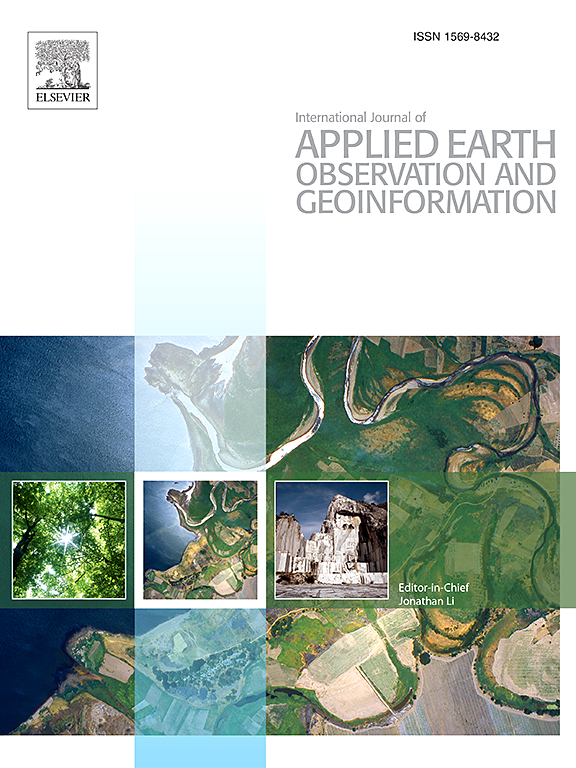High-resolution snow depth retrieval by passive microwave based on linear unmixing and machine learning stacking technique
IF 7.6
Q1 REMOTE SENSING
International journal of applied earth observation and geoinformation : ITC journal
Pub Date : 2025-03-13
DOI:10.1016/j.jag.2025.104467
引用次数: 0
Abstract
Accurate measurement of high-resolution snow depth (SD) is crucial for regional ecohydrology and climate studies. Passive microwave remote sensing is an effective technique for SD retrieval on global or regional scales. However, its low spatial resolution limits its application in various fields. Additionally, the complex effects of multiple factors in the microwave radiation process pose a significant challenge for accurate SD retrieval as SD increases. In this study, a high-resolution SD retrieval algorithm for passive microwave data was developed based on the linear unmixing method and machine learning (ML) stacking technique. Firstly, the 0.25° AMSR2 brightness temperature data were downscaled to 0.01° through linear unmixing. Then, combining the temporal and spatial features of the snowpack, the high-resolution SD was retrieved based on the ML stacking technique. This method combined the advantages of multiple base models for retrieving different depths of snow, which effectively improved the overall estimation performance of the algorithm. Compared with in situ observed SD at meteorological stations and field observation SD, the algorithm achieved an overall RMSE of 5.25 cm, which was lower than that of other coarse-resolution SD datasets and products, including the long-term series of daily SD dataset in China (7.40 cm), the ERA5-Land (9.71 cm), and JAXA AMSR2 Level 2 SD products (12.59 cm). Especially, it reduced the estimation error of deep snow with a depth exceeding 30 cm by 20.3 %, 21.5 %, and 24.9 %, respectively.
求助全文
约1分钟内获得全文
求助全文
来源期刊

International journal of applied earth observation and geoinformation : ITC journal
Global and Planetary Change, Management, Monitoring, Policy and Law, Earth-Surface Processes, Computers in Earth Sciences
CiteScore
12.00
自引率
0.00%
发文量
0
审稿时长
77 days
期刊介绍:
The International Journal of Applied Earth Observation and Geoinformation publishes original papers that utilize earth observation data for natural resource and environmental inventory and management. These data primarily originate from remote sensing platforms, including satellites and aircraft, supplemented by surface and subsurface measurements. Addressing natural resources such as forests, agricultural land, soils, and water, as well as environmental concerns like biodiversity, land degradation, and hazards, the journal explores conceptual and data-driven approaches. It covers geoinformation themes like capturing, databasing, visualization, interpretation, data quality, and spatial uncertainty.
 求助内容:
求助内容: 应助结果提醒方式:
应助结果提醒方式:


